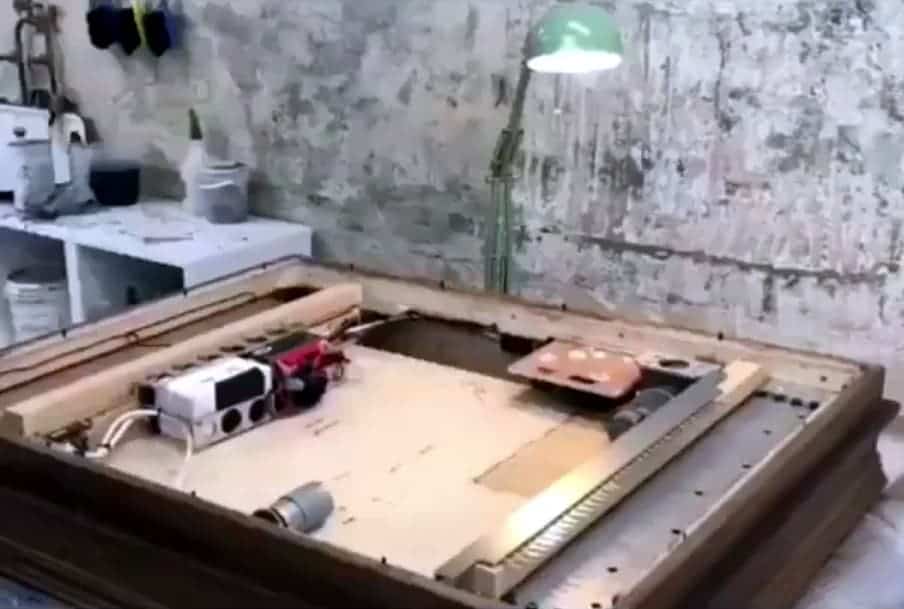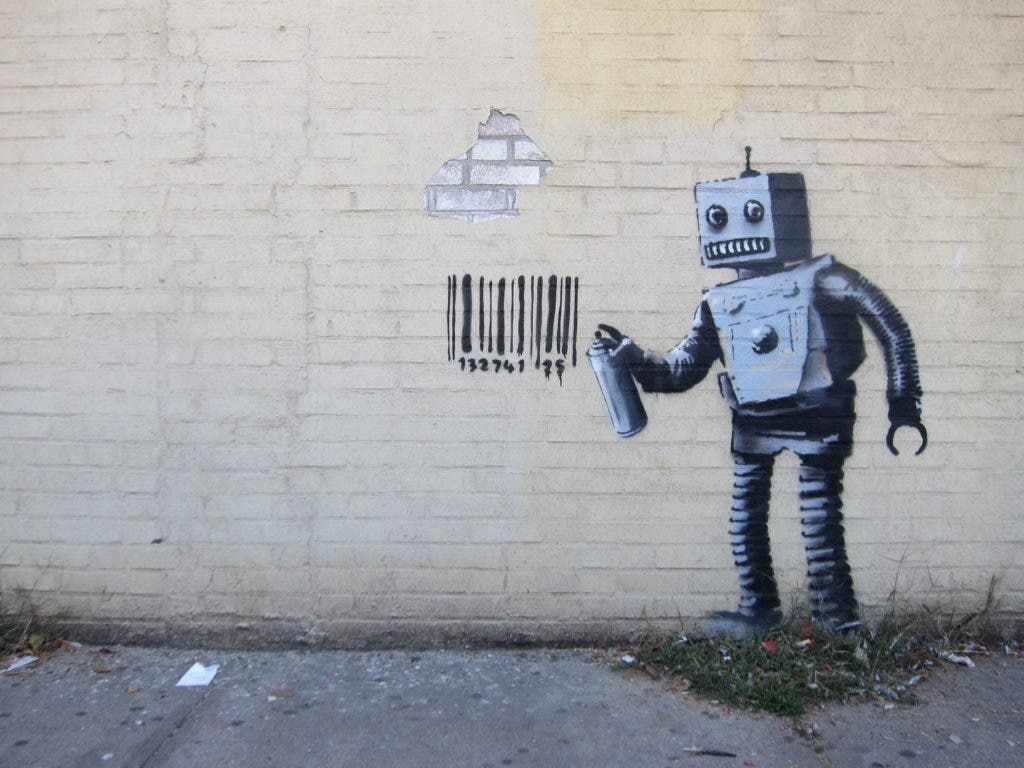A series of bizarre events recently stunned the art world. First, a 2006 stenciled spray-painting had sold for £1.042m (roughly $1.3 million). The fact that a stencil sold for that much is shocking in the first place — even though it was allegedly made by Banksy, the renowned English street artist. But as soon as the auction was concluded and the hammer dropped, the paper started self-destructing.

Going, going, gone
The always elusive Banksy has done it again — playing a prank on the entire art world, making history, and sending a strong message in true Banksy style. But how do things really lie with this new stunt?
Firstly, even if you haven’t heard of Banksy, the odds are you’ve seen one of his works at one point. He’s been called everything from a vandal to a political activist, though he is essentially a graffiti street artist. His works can be viewed as political and social commentaries on the modern world, often mocking centralized power, consumerism, and warfare.
In 2017, one of Banksy’s most famous works, Girl With Balloon, which originally appeared on a wall in Great Eastern Street, London, was voted the nation’s favorite artwork. Luckily for auction houses and collectors, Banksy made a few painting-style stencils of Girl with Balloon, which were sold anonymously in 2006 for meager prices. The Sotheby’s auction house in London got a hold of one of these stencils, which they auctioned the past weekend — the final price was well over one million dollars. But that’s only the start: as the stencil started shredding itself, Banksy first posted this on Instagram, simply saying “Going, going, gone.” Then, he added a video detailing how he installed the self-destroying machine in the frame. He quoted Picasso, saying “The urge to destroy is also a creative urge.”
The auction house said they were just as surprised as anyone, and were not expecting this turn of events, which they classified as a “prank”. The buyer, who also remained anonymous, did not comment. The quote from Alex Branczik, Sotheby’s Europe head of Contemporary Art, says it all: “We got Banksy’d”.
Art history and good batteries
No matter how you look at it, this stunt will make modern art history and will likely be discussed by art historians for decades to come. To make things even better, the artwork has almost certainly increased in value, maybe even doubled. That’s right, a framed stencil worth over $1 million just doubled in value after shredding. However, this is Banksy world, so normal rules don’t seem to apply.
But was this really a prank from the artist, or was it a carefully orchestrated stunt, to add more expected value to a piece of art?
For starters, one of Banksy’s presumed associates was detained after the event, holding something which looked like a remote control for the shredder. The incident caused quite a commotion, but Sotheby’s didn’t comment and did not say whether they were going to press charges or who the man was. But even so, to make this kind of plan work is no easy feat. Banksy’s video is short on technical details, and there are definitely a few bits which seem unlikely. The fact that the frame remained uninspected and did not pass through any metal detection or security checks seems unlikely for an auction of this caliber.

Furthermore, as Hackaday points out, Banksy’s plan features some “barely believable batteries.” Banksy mentions that the plan has been in place “for years” — since 2006, to be more precise. Operating a shredder requires a bit of power, and for the batteries to stay charged and active for so long seems a stretch — though it’s certainly not impossible; good batteries can last for years and years, but 12 years is way off from any reliable warranties. Unfortunately, we don’t know Banksy, so we can’t ask him how he did it or whether the auction house was in on it.
It’s plausible that Banksy planned and carried this out all on his own, but if the auction house was in on it, it would have definitely made things a lot easier and reliable.
Who is Banksy?
As any event involving Banksy, the question of the artist’s identity also comes up.

It’s thought that he grew up in Bristol, with Guardian journalist Simon Hattenstone describing Banksy in 2003 as “white, 28, scruffy casual — jeans, T-shirt, a silver tooth, silver chain and silver earring.” A 2008 Mail on Sunday investigation stated that the artist is believed to be Robin Gunningham, a former private school pupil, who was expelled for various misdemeanors. Another theory states that Banksy is actually a team of seven artists, while others have suggested that Banksy is Robert del Naja — one of the founding members of Massive Attack, as some of his graffiti paintings can be corroborated with the band’s concerts. Jamie Hewlett, the graphical creator of the band Gorillaz was also rumored as a “suspect.”
There was even a scientific geographical study on Banksy’s identity, which concluded that Robin Gunningham is the most likely person to be Banksy.
Yet perhaps more than with any other artist, it’s not about who Banksy is, but about his art. Banksy’s work is certainly a modern phenomenon that will continue to make headlines and people think for years to come — and if you can destroy an artwork and double its value, then we definitely have a lot to think about.






